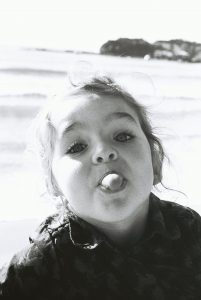Development in Early Childhood
Learning Objectives:
- Explore and connect Psychosocial, Cognitive, and Psychosexual Development
- Explore and connect another Theory, Approach, or Perspective to work in critical thinking skills for client assessments
- Exploring important aspects of a person’s experience and ability to justify why they are important
Vignette

Tisha, 3 y/o, has been demonstrating increased emotional and behavioral issues at her preschool. Her parents, Mr. and Mrs. Taylor have been called to meet with the Director to discuss these concerns. They report the same issues occurring at home, stating “We have no idea why she’s been having such a hard time, it was like she went to sleep our sweet girl one night and woke up a completely different child the next morning, refusing to listen, tantrums anytime she doesn’t get her way, she just fights us on everything”. They report they adopted Tisha when she was an infant and had minimal issues with her until several weeks ago when they report the change in behavior occurring. The Director discussed increased struggles with Tisha at school, also refusing to comply with requests from her teachers and showing increased aggression with her peers with hitting and biting, and possible need to dismiss Tisha from their program if her disruptive behaviors did not stop.
Mr. and Mrs. Taylor admit they have really struggled with what to do, “so we usually just end up letting her have her way because we get so tired and frustrated with fighting with her – we just don’t know what to do”. The Director explores a referral for mental health services that could be provided at the school, discussing how professional interventions may be needed due to her history and the Taylors agree to an initial assessment.
Mr. and Mrs. Taylor meet with a Licensed Certified Social Worker (LCSW) for an initial assessment. He greets them warmly and then invites Tisha to choose some toys to play with while he speaks with her parents. Tisha seems uncertain at first and slowly begins to explore the toys in the room. The Social Worker invites Mr. and Mrs. Taylor to share their story and concerns while Tisha plays and they report their history of struggling to conceive and how happy they were to finally have a child when Tisha came into their lives. They discussed how everything was going very well until the past several weeks when the emotional and behavioral struggles began. The Social Worker asked if any changes had occurred around the time Mr. and Mrs. Taylor noticed Tisha’s change in behavior and they reported none they could think of. The Social Worker then explored any information they were given about Tisha and her biological parents/family before she came into their care. They reported minimal information was given but remembering hearing her biological mother had struggled with drug use before becoming pregnant but had reported stopping use of all drugs except for marijuana while pregnant. Mrs. Taylor states “her biological mother had also reported struggles with caring for Tisha her first few months but I don’t really know what that means”. They reported not thinking this had affected Tisha as she had not had any major issues during her first couple of years with them but are starting to wonder what she may have experienced in her first several months before coming to live with them.
During this time, the Social Worker notices Tisha engages in some aggressive play with various people figures and hitting toys together. He also notices she is rocking back and forth at times in between her play. She also gets increasingly louder when she hears her parents speaking. The Social Worker reflects this and Tisha sticks her tongue out at him.
Critical Thinking:
- What stage of Piaget’s Theory of Cognitive Development is the client currently in? Are they meeting expectations of this stage? Examples? Are they demonstrating any delays in this stage? Examples?
- What stage of Erikson’s Theory of Psychosocial Development are they currently in? Are they meeting the goals of this stage? Examples? Are they demonstrating any struggles with their goals in this stage? Examples?
- What theory, approach, or perspective from previous Dimensions (PIE, Biopsychosocial, Sociocultural, or Social Change) would you use to assess this client? Why?
- What do you feel are the most important aspects (physical development, attachment, sexual development, etc) to consider for this client? Why?
References
Hutchinson, E. D. (2019). Dimensions of human behavior (Sixth edition). Sage Publications, Inc.

